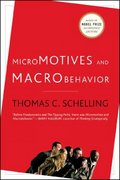Question
A consumer has income of 3000. Bread is priced at 3 a loaf and potatoes priced at 6 a kilo. Draw the consumer's budget constraint.
A consumer has income of 3000. Bread is priced at 3 a loaf and potatoes priced at 6 a kilo.
Draw the consumer's budget constraint. What is the slope of this budget constraint?
Draw a consumer's indifference curves for bread and potatoes. Pick a point on an indifference curve for bread and potatoes and show the marginal rate of substitution. What does the MRS tell us?
Show the optimal consumption choice. What is the MRS at this optimum?
The price of potatoes rises from 6 to 10 a kilo, while the price of bread remains at 3 a loaf. For a consumer with a constant income of 3000, show what happens to consumption of bread and potatoes. Decompose the change into income and substitution effects.
Question 2
A government decides to reduce air pollution by reducing the use of petrol and imposes a specific tax of 0.50 on energy companies for each litre of petrol sold.
Use a supply and demand diagram and show the effect of the tax on consumer and producer surplus and comment on the incidence of the tax on consumers of energy and producers of energy.
Should it impose this tax on petrol companies or motorists? Explain, using a supply and demand diagram. (10 points)
If the demand for petrol were more price elastic, would this tax be more effective or less effective in reducing the quantity of petrol consumed? Explain with both words and a diagram.
Are consumers of petrol helped or hurt by this tax? Why?
Question 3 (35 points)
The Placebo Drug Company holds a patent on one of its discoveries.
Assuming that the production of the drug involves rising marginal cost, draw a diagram to illustrate Placebo's profit-maximizing price and quantity. Also show Placebo's profits.
Now suppose that the government imposes a tax on each bottle of the drug produced. On a new diagram, illustrate Placebo's new price and quantity. How does each compare to your answer in part (a)?
Although it might not be easy to see in your diagrams, the tax reduces Placebo's profit. Explain why this must be true.
Instead of the tax per bottle, suppose that the government imposes a tax on Placebo of 110,000 regardless of how many bottles are produced. How does this tax affect Placebo's price, quantity and profits? Explain. (Hint: Additional unit produced won't affect the tax amount).
Step by Step Solution
There are 3 Steps involved in it
Step: 1

Get Instant Access to Expert-Tailored Solutions
See step-by-step solutions with expert insights and AI powered tools for academic success
Step: 2

Step: 3

Ace Your Homework with AI
Get the answers you need in no time with our AI-driven, step-by-step assistance
Get Started


